Why First-Time Homebuyers Should Consider Langley, BC in 2025
Are you a first-time homebuyer looking for a vibrant, growing community to call home? Langley, British Columbia, is quickly becoming one of the most attractive destinations for young professionals, couples, and families looking to enter the real estate market. With the upcoming Surrey-Langley SkyTrain extension, expected to be operational by late 2029, Langley is poised for significant growth, making it an ideal spot for first-time buyers. This guide explores why Langley’s rapid development, affordable housing options, and exciting lifestyle make it a top choice for your first home purchase.
Why Langley is a Hot Spot for First-Time Homebuyers
Langley’s appeal is skyrocketing, thanks to its blend of affordability, connectivity, and a thriving community. Here’s why first-time buyers are flocking to Langley:
-
Affordable Housing Options: Compared to Vancouver and other Metro Vancouver cities, Langley offers more budget-friendly homes, including condos, townhomes, and entry-level single-family houses. This affordability is crucial for first-time buyers looking to maximize their investment.
-
Surrey-Langley SkyTrain Extension: The 16-kilometre Expo Line extension from King George Station to Langley City Centre, set to open in late 2029, will transform commuting. Travel from Langley to downtown Vancouver will take just over an hour, making Langley a viable option for urban professionals seeking suburban value.
-
Rising Home Values: Real estate experts predict that the SkyTrain will drive property value increases, similar to the 10-20% boosts seen near SkyTrain stations in Burnaby and Richmond. Buying now could secure your home before prices climb further.
-
Rapid Community Growth: Langley is one of Metro Vancouver’s fastest-growing areas, with a projected population increase of 420,000 and 147,000 new jobs by 2050 in Surrey, Langley City, and Langley Township. This growth fuels demand for housing and amenities.
-
Vibrant Lifestyle: Langley offers a dynamic mix of urban and rural charm, with new shopping, dining, and community events like the Langley Cruise-In, outdoor markets, and spring, summer, and fall festivals that create a lively atmosphere.
Quick Fact: Langley’s transit-oriented development (TOD) plans around SkyTrain stations, like Willowbrook and Langley City Centre, will create walkable, mixed-use hubs with condos, shops, and services, perfect for first-time buyers seeking convenience.
Benefits of Buying in Langley as a First-Time Buyer
Langley’s growth and infrastructure investments make it a smart choice for first-time homebuyers. Here are the key advantages:
-
Investment Potential: The SkyTrain’s arrival is expected to boost home values, especially in transit-oriented areas (TOAs) within 800 meters of stations. Early buyers can capitalize on this growth before prices peak.
-
Modern Condo Developments: New presale condo towers, like Jethro Langley, Fenway Langley, Opus Langley, and VUE6 Langley, offer modern, affordable homes near future SkyTrain stations, ideal for young buyers seeking low-maintenance living.
-
Enhanced Connectivity: The SkyTrain will connect Langley to Surrey in just 22 minutes and Metro Vancouver’s broader transit network, reducing reliance on cars and easing commutes.
-
Growing Amenities: Langley’s retail and dining scene is expanding, with hubs like Willowbrook Shopping Centre and new mixed-use developments. Enjoy local restaurants, cafes, and community events like the Langley Cruise-In, a classic car show that draws thousands each year.
-
Outdoor and Community Events: Langley’s parks, trails, and seasonal events, such as summer farmers’ markets and fall harvest festivals, offer a rich lifestyle. Nearby Fort Langley, with its historic charm, adds to the appeal for weekend outings.
Pro Tip: Look into presale condos near Willowbrook or Langley City Centre stations for early-bird pricing and prime locations. Contact a local realtor for VIP access to projects like The Towers or The Nest.
Tips for First-Time Homebuyers in Langley
Navigating Langley’s real estate market as a first-time buyer can be exciting but challenging. Follow these tips to make the process smoother:
-
Get Pre-Approved for a Mortgage: Connect with a mortgage broker to determine your budget and secure pre-approval. This strengthens your offer and clarifies your price range in a competitive market.
-
Leverage First-Time Buyer Incentives: Explore programs like the First-Time Home Buyer Incentive, BC Property Transfer Tax Exemption (for homes up to $500,000), or the Home Buyers’ Plan (HBP), which allows you to withdraw up to $35,000 from your RRSP tax-free for a down payment.
-
Partner with a Local Realtor: A Langley-based real estate agent can guide you through emerging neighborhoods, highlight presale opportunities, and negotiate on your behalf. Look for experts familiar with transit-oriented developments.
-
Focus on Transit-Oriented Areas: Prioritize properties near Willowbrook or Langley City Centre stations for maximum convenience and future value growth. These areas are set to become vibrant, walkable hubs.
-
Consider Future Needs: Choose a home that fits your current lifestyle but also offers flexibility, like extra bedrooms for a growing family or space for a home office.
-
Inspect Thoroughly: Whether buying a presale condo or an existing home, hire a professional inspector to ensure quality and avoid unexpected repairs.
Top Neighborhoods for First-Time Buyers in Langley
Langley offers diverse neighborhoods catering to different preferences and budgets. Here are some top picks for first-time buyers:
-
Willowbrook: A central hub with access to Willowbrook Shopping Centre and the future SkyTrain station. Expect new condo towers and mixed-use developments, perfect for urban convenience.
-
Langley City Centre: The SkyTrain terminus, set to become a walkable downtown with high-density condos, shops, and restaurants. Ideal for young professionals seeking a vibrant lifestyle.
-
Yorkson: A family-friendly area with modern townhomes and condos, like Fenway Langley, close to schools and parks. Great for buyers wanting suburban space with urban access.
-
Nicomekl: Home to new developments like Opus Langley and VUE6 Langley, this neighborhood offers affordable condos in a growing, transit-friendly area.
-
Willoughby: A rapidly developing area with presale projects like The Nest and Camden, offering modern homes near future transit corridors.
Why 2025 is the Perfect Time to Buy in Langley
With the SkyTrain construction underway and home values expected to rise, 2025 is an opportune moment for first-time buyers to invest in Langley. The city’s rapid growth, fueled by transit improvements and new developments, promises long-term value appreciation. Plus, Langley’s vibrant community, with events like the Langley Cruise-In and seasonal festivals, offers a lifestyle that’s hard to beat.
Ready to Start Your Homeownership Journey? Contact our Langley real estate team today to explore listings, discover presale condo opportunities, and learn about first-time buyer incentives. Let us help you find your dream home in one of BC’s fastest-growing communities!
Disclaimer: Real estate prices, project timelines, and availability are subject to change. Consult a licensed realtor for the latest market information.
 Subscribe with RSS Reader
Subscribe with RSS Reader








